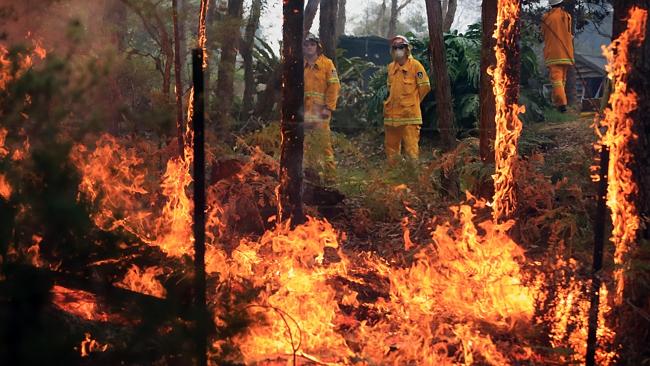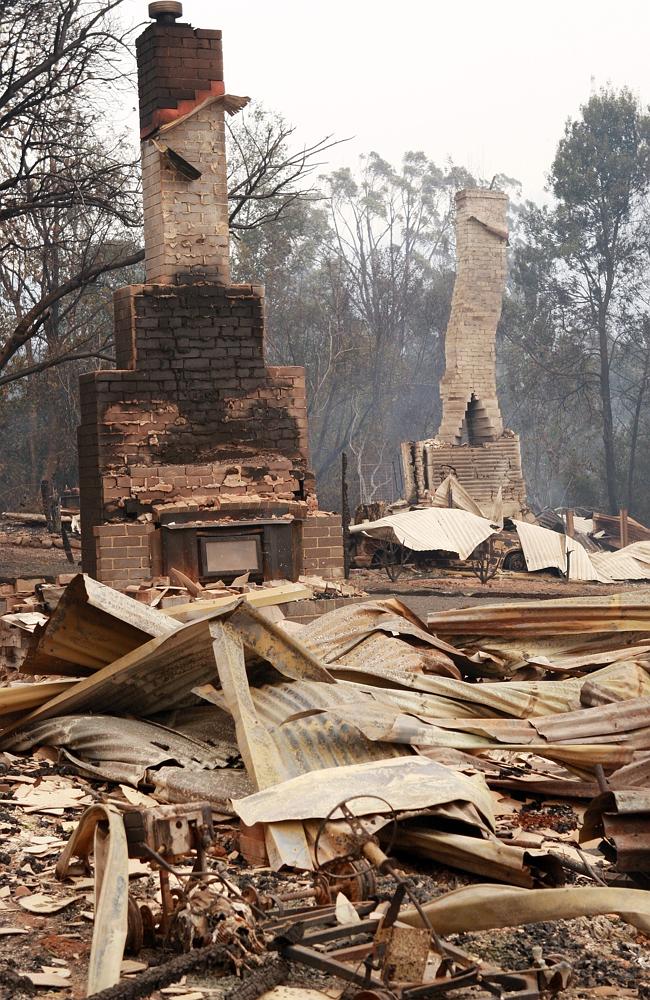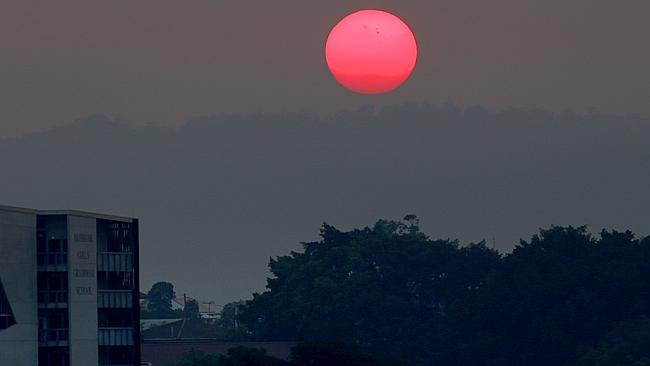Bushfires in Australia deadlier, more destructive and worse to come
BUSHFIRES are almost twenty times more deadly and eighty times more destructive than a century ago - and experts warn worse is to come.
BUSHFIRES are almost twenty times more deadly and eighty times more destructive than a century ago - and experts warn the devastation will continue to grow as urban sprawl pushes further into bushland.
Exclusive analysis by News Corp Australia has revealed the true extent of the devastating toll caused by decades of bushfires.
In today's money, the combined damage caused by bushfires over the past 90 years is almost $7 billion.
And $2.6 billion of this damage was caused in the past 13 years.
INTERACTIVE FEATURE: HALF A DECADE AFTER BLACK SATURDAY

VICTORIA FACES HIGH BUSHFIRE CONDITIONS
Bushfires in the first decade of the 20th century killed 12 people and destroyed 56 homes.
But the first decade of the 21st century saw a dramatically larger tally - 198 Australians were killed and more than 4,000 properties destroyed.
And the number of catastrophic fires are rapidly increasing.
Last year alone had three catastrophic fires were recorded. Between 1900 and 1910, there was only one.
University of Melbourne planning expert Alan March said bushfires will continue to grow more catastrophic as Australians move further into bushland.
"We are increasingly putting ourselves in harm's way," Dr March said.
"There are millions more living in these risky situations"
The analysis of bushfire catastrophes from the Australian Emergency Management Institute and Insurance Council of Australia since 1851 reveals the 1983 Ash Wednesday fires are still the most damaging in history, totalling $1.8 billion damage in today's money.
But bushfires since 2000 account for almost one thirds of all deaths, buildings destroyed and known damage costs.
SHOULD GOVERNMENTS ACT ON URBAN SPRAWL? COMMENT BELOW
The Insurance Council of Australia says growth of communities living in high risk areas and lack of preparedness may lead to costs soaring even further.
"Eight in 10 households are underinsured," said Campbell Fuller, Communications Manager for the Insurance Council of Australia.
"Most household policies contain cover for bushfires. However, it's important to check home and contents policies to ensure the sum insured is enough to rebuild and replace possessions if the worst were to happen."

Since 1917, Queensland has suffered six bushfires disasters with 13 deaths and a known cost of $215 million.
January and February are the most dangerous times as temperatures soar throughout the nation - 54 per cent of the most devastating bushfires occur during these months, including Ash Wednesday fires and 2009 Black Saturday Fires.
The first three years of this decade has seen twice as many catastrophic bushfires than the entirety of the 1970s.
The Climate Council last year linked the increased extreme fire weather with climate change, suggesting it has increased the frequency and severity of very hot days.

But Dr March said the answer was more complicated.
"Blaming climate change is unproductive," said Dr March. "There are too many variables."
These variables include loss of Aboriginal fire management, but the human element is also key to the intensity of fires.
University of Tasmania environmental change biology professor David Bowman described Australia's fires as "cyborgs" because they are "part nature, part human".
And Professor Bowman is critical of people choosing to living in bushfire prone areas.
"There is an expectation from them that the government will drop everything to help," he said. "This is causing budget blowouts and risking lives."
He said people living in the bushland need to be aware of the dangers.
"The Australian bush is fundamentally flammable. It absolutely will burn at some time," said Professor Bowman.




